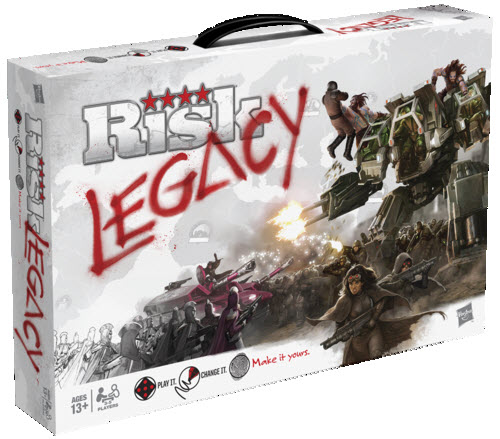The busiest year in gaming gave way to the slowest year. I stopped this blog in February, moving over to the Father Geek website to blog. What a great group of gentlemen, but I found that I was missing half my audience. The guys at Father Geek are focused on family gaming, but I am trying to reach the casual gamer also. As a result, and also probably because I was one of many writers, I really didn't write much at all.
Another factor in writing: this year was a slow year for actually playing games, both favorites and new games. It was a very busy year outside of gaming. Over the course of the year I have played 21 different titles for a total of 59 plays to date. I am sure I will play a few more times this year. It will most likely be the same titles, so the count will end up around 21/62. Of the 21 titles I played, seven were new titles. All of these numbers are about a third of last year's numbers.
I did slow down my game acquisition this year - just 47 new games. One group of games I received were from our neighbors cleaning out their closet. Quite a few of my new games were acquired in trades, as I realized that those four hour marathon games, no matter how good, just weren't going to be played. Neither were those extremely complicated games, as they generally don't appeal to my gaming group. My group falls somewhere between "casual gamers" and "hard-core".
Best Acquisition of the Year: Werewolves of Miller's Hollow. I will review this game at some point, since this is my favorite group game. All but one of the plays of this game were on my son's 8th Grade trip to Washington DC. In fact, all of those plays were in five hours on the way home!
Most Played Game of the Year: Werewolves of Miller's Hollow. Same story. See how limited my game playing was?
Our gaming group celebrated four years of getting together. However, we also had our first missed months. After 3 1/2 years of meeting, we missed roughly four of the next six, for both good and bad reasons. We really started pulling back together in the fall, after school started back up.
Since there really wasn't a group hit of the year, so I will go with:
Game Group Flop of the Year: Small World. After exactly one play, the gaming group suggested I trade it away. There was no interest in trying it again. I haven't reviewed it. I didn't see the magic, but there are so many people who love the game that I figure I must be missing it. Oh, and I did trade it away in a multi-game trade which netted me Notre Dame and YINSH.
A close runner up to Small World would be Warrior Knights, which is a complicated marathon game that I will keep. It's a medieval multi-player wargame that is just the kind of thing I love! I think we played our one and only play of that in the group, too. But maybe I can sneak it in sometime this coming summer...
What's really remarkable this year are my favorite games that I didn't play, most notably Acquire. That will certainly be played early in the year in 2013.
Finally, just like last year, I will list my Nickles and Dimes: games played 5 and 10 times respectively. (Once more I won't count the 100+ games of chess I played online this year.)
Dimes
Plays / Game
10 Werewolves of Miller's Hollow
Nickles
Plays / Game
7 Hive
6 Bananagrams
5 Chess (over the board)
Both Pandemic and Carcassonne are likely games to hit the table in the last few days of the year, so I may have a few more nickles yet.
Here's hoping that 2013 is a better year of gaming - for all of us!
It's Your Move!
Related posts and links:




















